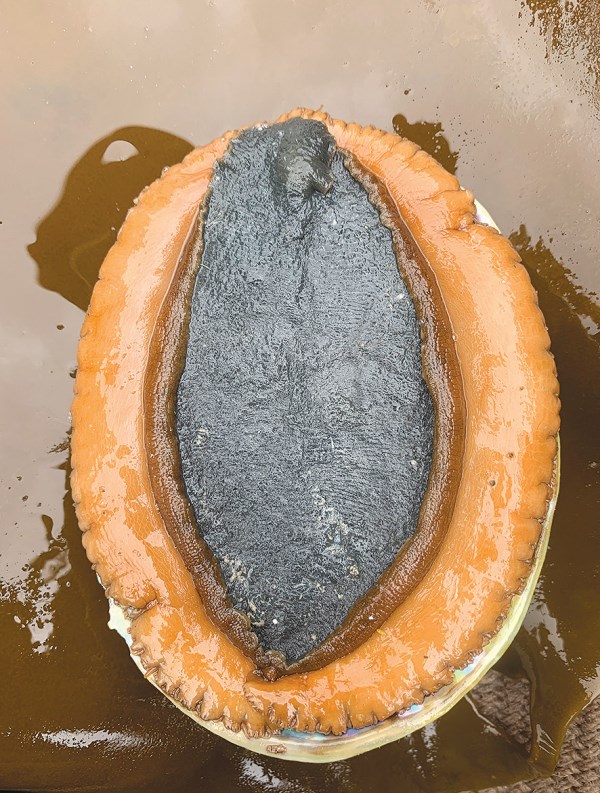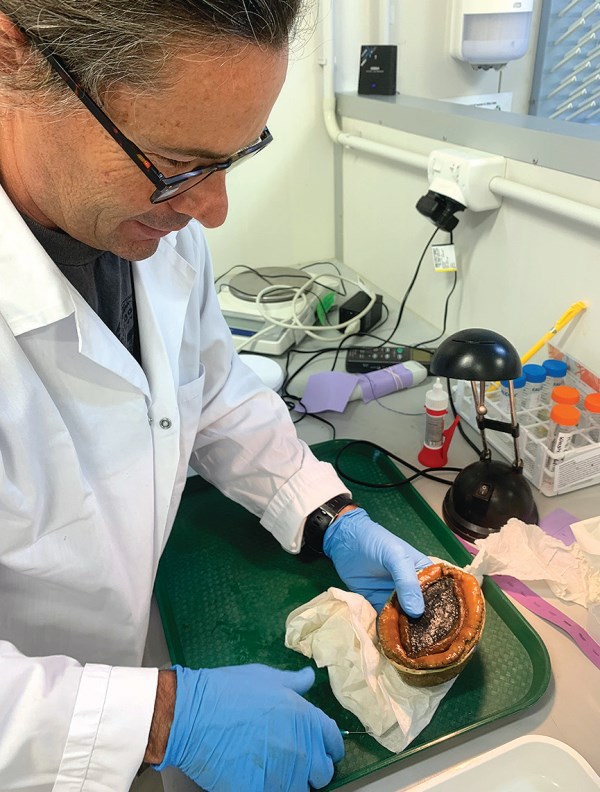
In New Zealand we have three distinct species of pāua (abalone). Most people are familiar with the most common: blackfoot pāua (Haliotis iris). Characterised by its black foot and iridescent blue-green colouration of the inside of the shell, the blackfoot pāua is one of our most popular fisheries species and is a treasured kai moana. There is also the yellowfoot pāua (Haliotis australis), which is smaller and less common than the blackfoot pāua and is identified by its striking, yellow foot and mother-of-pearl coloured shell. The least common species is the seldom-encountered virgin pāua (Haliotis virginea), characterised by its small size (maximum 80mm) and grey-brown foot colouration.
However, from time to time, nature produces something completely different!

During recent postearthquake biomass surveys near Kekerengu (north of Kaikoura), an interesting pāua variant was found. It was identified in a sizeable aggregation of large blackfoot pāua and given away by its distinctive brown lip. When removed from the rock it revealed a remarkable orange-brown colouration of the skirt tissue of the foot, while otherwise having all the normal characteristics of a blackfoot pāua (size, shape and shell colouration).
Pāua that look like this are harvested and landed very occasionally in commercial catches, perhaps one in a million pāua. There is great interest in studying these variants, particularly from a genetics and breeding perspective, however previous discoveries of these pāua have usually ended up shucked or frozen before anything can be done. This individual has been successfully kept alive and initial research plans have been made to help us understand what might have caused the colour variation. Our initial thoughts (after consultation with scientists) are that the colour variation has arisen from a random mutation to genes responsible for producing the black pigmentation in a normal blackfoot pāua, rather than any kind of cross-species hybridisation (e.g., between blackfoot and yellowfoot pāua).

Initial research on this pāua variant is being undertaken via a collaboration between Dr. Norman Ragg (Cawthron Institute’s Shellfish research team leader), Dr. Nathan Kenny (Rutherford Discovery Fellow, University of Otago) and Dr. Tom McCowan (Pāua Industry Council). Preliminary genetic analyses will compare the transcriptomes (protein coding genetic sequences) of the variant to ‘normal’ blackfoot pāua to determine if there are detectable differences in the pigment deposition pathways. In other words, seeing if there is an underlying genetic reason for the variation in colour, or whether it may be due to a cross-species hybridisation.
There is also interest in understanding what this unusual characteristic means for the pāua itself: is it healthy? Is it more vulnerable to sunburn? What would happen if two of these ‘one in a million’ variants tried to breed? This is where you come in:
If you are ever out diving and see one of these unusual pāua variants, we would love to know or, even better, do your best to keep it alive and you may be part of a unique piece of science!
Contact details for people to get in touch.
The Fishing Paper & Hunting News [email protected]
Paua industry Council Ltd. [email protected]













